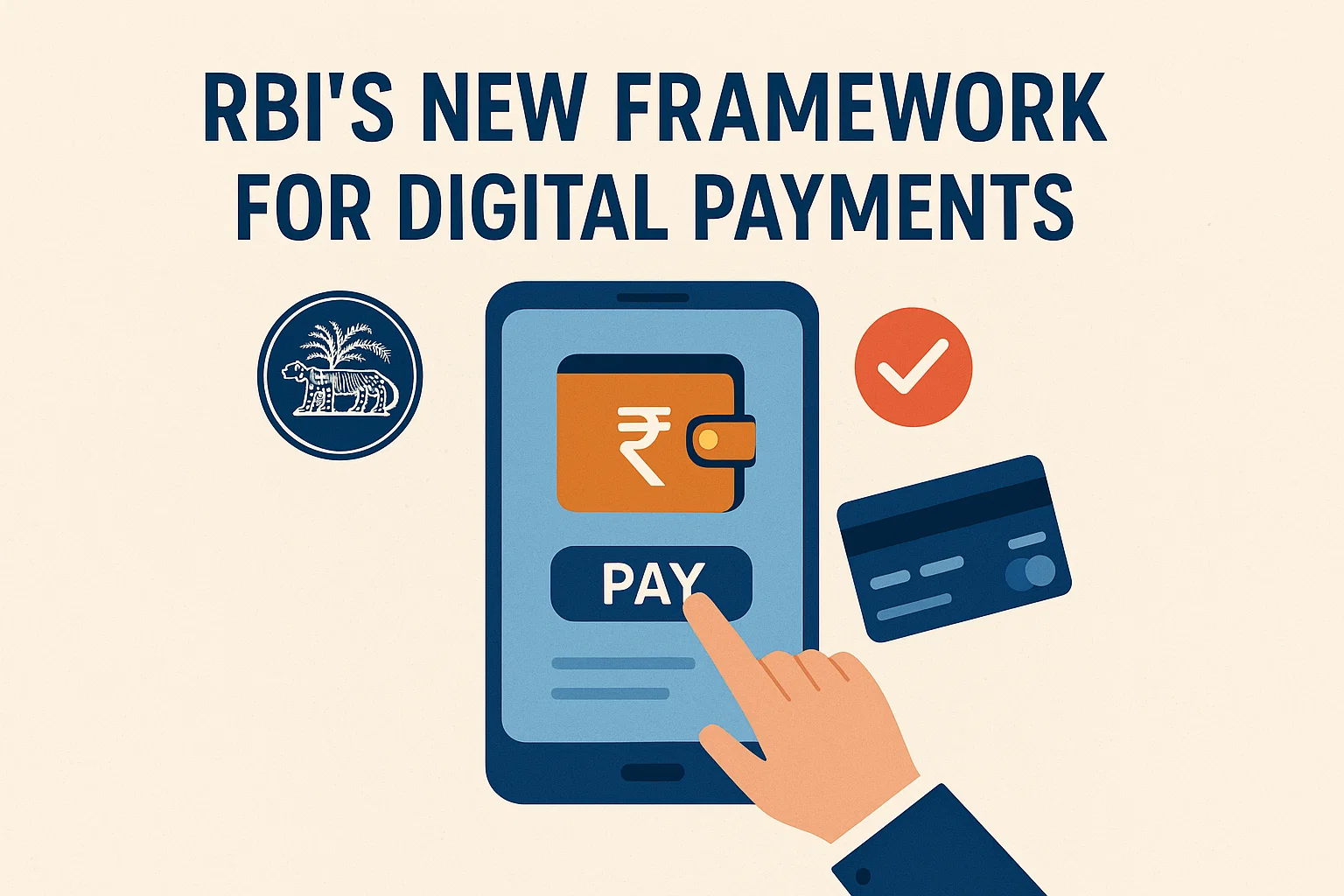RBI’s New Framework for Digital Payments
RBI introduces a risk-based authentication framework for digital payments, effective April 2026, enhancing security, user convenience, and fraud prevention while aligning with global standards.
Context
The Reserve Bank of India (RBI) has introduced a transformative framework for digital payment security, mandating a risk-based authentication system effective from April 2026. This initiative aims to enhance the security of India’s rapidly expanding digital payments ecosystem while improving customer convenience and aligning the country with global best practices.
New RBI Guidelines on Digital Payment Authentication
The RBI guidelines introduce a risk-based authentication model, which replaces the uniform OTP-for-all transactions approach with a more nuanced system. Key features include:
-
Risk-Based Approach: Authentication checks will be customised according to the perceived risk of a transaction rather than applying the same procedure for all payments.
-
Dynamic Authentication Factors: While two-factor authentication remains mandatory, alternatives to OTPs are now allowed. These include biometric verification (fingerprint, facial recognition) and device-binding, enabling safer yet smoother transactions.
-
Context-Aware Security: For transactions flagged as suspicious—for instance, from a new device, at unusual hours, or from an overseas location—banks can add extra verification layers.
-
Seamless Low-Risk Transactions: Routine transactions such as bill payments or small purchases will continue with minimal friction, reducing inconvenience for users.
Difference from the Old OTP-Based System
The new framework marks a significant evolution from the static OTP model.
| Feature | Old OTP-Based System | New Risk-Based System |
|---|---|---|
| Core Principle | One-size-fits-all authentication for every transaction | Dynamic, context-aware authentication tailored to transaction risk |
| Security Focus | Relied primarily on the secrecy of OTP | Multi-layered approach using device, behaviour, location, and transaction history |
| User Experience | OTP required for almost all transactions, causing friction | Low-risk transactions are seamless; additional checks triggered only for high-risk scenarios |
| Fraud Detection | Reactive; fraud often detected after occurrence | Proactive; AI and analytics flag suspicious patterns in real-time |
Benefits of the New Framework
-
Enhanced Security: The system adopts a zero-trust architecture, continuously monitoring for suspicious signals such as device compromise or unusual user behaviour, making fraud attempts significantly harder.
-
Improved User Convenience: By reducing false rejections and friction in low-risk transactions, the framework enhances the overall customer experience, making digital payments smoother and faster.
-
Proactive Fraud Prevention: AI-driven behavioural analytics enable early detection of fraudulent patterns before a transaction is completed, offering a preventive approach to cybercrime.
-
Alignment with Global Standards: By adopting internationally recognised security measures, India strengthens global interoperability and trust in its digital payment ecosystem, facilitating cross-border transactions.
Potential Challenges
-
Technological Upgrades: Banks and payment processors must invest in advanced systems capable of behavioural analytics and AI-driven monitoring while ensuring no transaction latency occurs.
-
Rural-Urban Divide: Reliance on smartphones, biometrics, and internet connectivity may marginalise users in rural areas, potentially reinforcing OTPs as the default method and creating a two-tier system.
-
Legal and Regulatory Issues: New authentication methods raise questions regarding data privacy, legal validity, and liability in the event of disputes. Clear regulations will be needed to safeguard users and institutions alike.
-
Implementation Complexity: Rolling out a standardised system across India’s diverse banking landscape, including small rural banks, payment apps, and fintech providers, will be operationally challenging.
Significance
RBI’s shift to risk-based authentication represents a decisive step towards a Digitally Safe India. By combining enhanced security with a seamless user experience, the framework addresses both fraud prevention and financial inclusion. Its adoption signals India’s commitment to modernising digital payments while fostering public trust, which is crucial as digital transactions continue to grow exponentially.
The framework is also expected to catalyse technological innovation in the banking sector, encouraging fintech firms to develop secure, adaptive payment solutions. By aligning India’s practices with international standards, the RBI ensures that the country’s payment ecosystem remains competitive, secure, and future-ready.
Conclusion
RBI’s risk-based authentication framework is a landmark policy in India’s digital payment journey. While challenges in technology, regulation, and rural accessibility remain, the model promises proactive fraud detection, enhanced security, and user convenience. As India moves towards a cashless economy, this initiative will be pivotal in safeguarding financial transactions and strengthening the trust of millions of users in the digital ecosystem.
Subscribe to our Youtube Channel for more Valuable Content – TheStudyias
Download the App to Subscribe to our Courses – Thestudyias
The Source’s Authority and Ownership of the Article is Claimed By THE STUDY IAS BY MANIKANT SINGH




